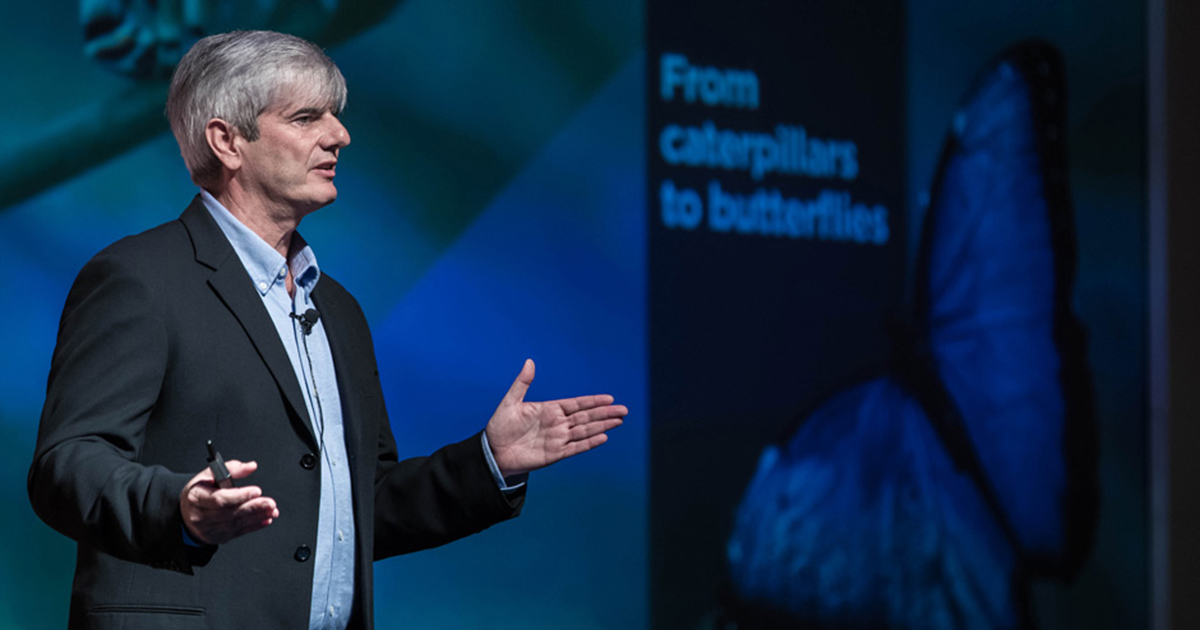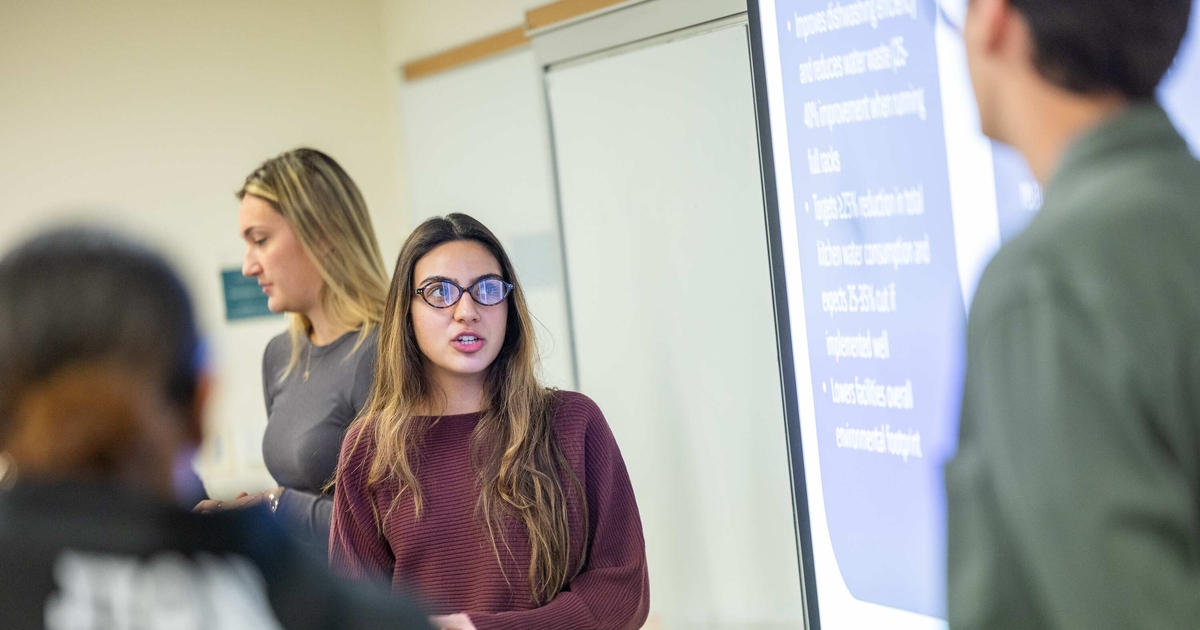People, Planet, Profits: A Recipe for Triple Bottom Line

Ramon Mendiola is itching to share a recipe with the masses.
No, it’s not a recipe for one of the many beverage brands his company, Florida Ice and Farm Company (FIFCO), owns. Rather, it’s a recipe for simultaneously evolving business and creating shared value. It’s a recipe for the triple bottom line—people, planet, and profits—that led FIFCO through a breakthrough transformation.
“The world is facing so many environmental and social challenges: inequality, poverty, climate change,” said Mendiola. “The private sector has a critical role to play, more than paying taxes and generating employment. Once we recognize our social and environmental footprints, it’s time to do something about them.
That’s why Mendiola, CEO of FIFCO, merged the company’s business strategy with corporate social responsibility. His goal: to tackle social and environmental issues with the same rigor taken for financial performance. By creating a Triple Bottom Line company devoted to people, planet and profits, FIFCOs profitability has skyrocketed, reaching 1 billion in USD sales. “It’s been the turning point for our organization.”
To implement triple bottom line into FIFCO’s business model, Mendiola implemented a multipronged approach that helped the company and its shareholders evolve and find the organization’s purpose: “To bring a better way of living to the world.”
Ask What Your Stakeholders Expect from Your Company
In Conscious Capitalism—a book Mendiola credits as one of his inspirations—stakeholders are described as the entities that impact or are impacted by a business. And, for a business to truly become a 3BL organization, stakeholders have to be a part of the dialogue, said Raj Sisodia, co-author of Conscious Capitalism and professor of global business at Babson College.
“The traditional approach is about making a profit, so it’s all about shareholders,” said Sisodia. “To do business with a higher purpose, you have to consciously create value for your stakeholders.”
To bring stakeholders into the conversation, FIFCO used systematic research with consumers, suppliers, customers, employees—even those who regulated or opposed the alcohol industry. “I wanted to really know what everyone thought of us,” said Mendiola.
Stakeholders saw FIFCO leaving four negative footprints: harmful use of alcohol by consumers, excess solid waste, water usage, and carbon emissions. It all made sense to Mendiola, who now had to work to minimize those footprints and have FIFCO’s shareholders onboard.
Ensure Leaders Buy in to the Strategy
“Leaders need to be convinced you’re doing things for the right reasons,” he said. All stakeholder feedback was shared with FIFCO’s executives. Once that information was in their hands, they decided on a strategy for addressing these issues and even go beyond to become a company net positive.
This co-creation—having leadership on board from the beginning of setting the strategy and vision—is a critical component of 3BL success, said Sisodia. “Creating a shared vision and sense of purpose empowers everyone to be a part of the journey,” he said. “When shareholders are a part of what’s created, there’s a higher chance of succeeding.”
Mendiola took this shared vision one step further to motivate buy-in to the 3BL strategy; he tied FIFCO’s 3BL success to his executives’ compensation. This linked the company’s economic, social and environmental KPIs together. “I believe when you touch the wallet of your executives and your employees, people will listen, people will do things, they will move the needle,” he said in an interview with BCG Perspectives.
Set (and Measure) Triple Bottom Line Goals
In 2008, FIFCO made four commitments based on the areas of opportunity identified by stakeholders. Their goals: to improve consumer alcohol consumption patterns in Costa Rica, to become a zero solid waste company, and to become water and carbon neutral.
Sharing the goals is just as important as setting them, said Mendiola. “When you make your commitments public, there’s no way you’ll fall back from your position. You drive the organization toward accomplishing the goals.”
That transparency is a critical component of any triple bottom line or conscious capitalism strategy, said Sisodia. “Transparency and trust go together,” he said. “If you trust people, you’ll be transparent with them. If you’re not transparent, you cannot talk about trust.”
Report Back
One of the most important elements of Mendiola and FIFCO’s success: sharing progress with stakeholders and society as a whole.
FIFCO used the Global Report Initiative to report back to society on its commitments. And, they’ve got a lot of success to share. They became a zero solid waste company in 2011; “No more sending garbage bags to a landfill,” he said. They were the first company to become water neutral by first reducing the water used to create products, then compensating for use by helping communities without access to clean water. They’re on the path to becoming carbon neutral, and are working diligently to improve consumption patterns, too. “We are on that journey now and taking ownership of the footprints we’ve created.”
People, Planet, Profits
Aside from its positive impact on the planet and FIFCO’s profits, Mendiola’s approach to 3BL also helped increase engagement with those who mattered most to the company: its people. “Earn the hearts of your employees and you’ll have the most successful company.”
To earn those employee hearts, FIFCO committed to bringing employees out of poverty conditions and increasing opportunities for volunteering. The company has implemented dozens of social projects including building housing after an earthquake in 2009, building aqueducts to provide fresh water access for villages in rural areas of Costa Rica, etc.
These initiatives led to increased loyalty and retention and helped FIFCO earn the No. 1 position in the ranking “Great Places to Work in Costa Rica.”
While the company already has implemented—and found success from—it’s new strategy, it’s still setting aggressive goals to continue to evolve its business model and minimize the footprints it leaves behind. FIFCO aims to double the size of the business by 2020; it’s also publicly committed to several social and environmental goals, including becoming water and waste positive, accomplishing 1 million hours of volunteering, making its brands as light as possible to the environmental and society, and continuing to improve consumer alcohol, beverages, and food consumption patterns by 2020, what they call “Smart Consumption.”
How will FIFCO get there? Triple Bottom Line, of course. Said Mendiola: “This is our way of doing business and what we stand for.”
Posted in Entrepreneurial Leadership





